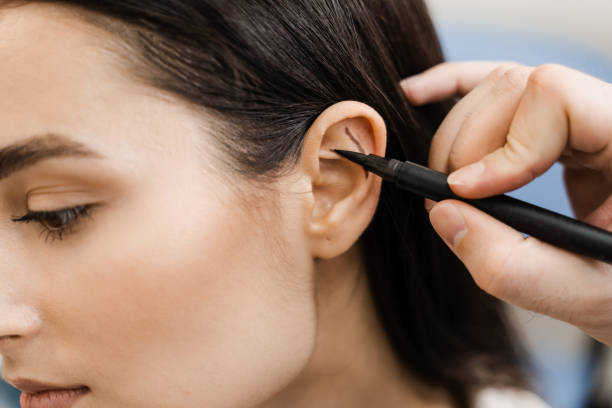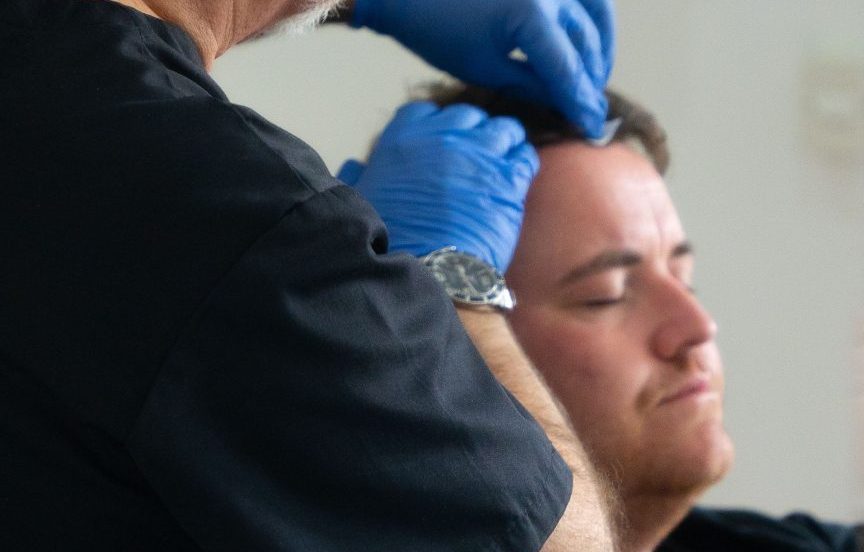
Pinnaplasty: Expert Guide to Ear Surgery for Perfectly Shaped Ears
Pinnaplasty: Expert Guide to Ear Surgery for Perfectly Shaped Ears
Unlock Confidence with Pinnaplasty
Are you self-conscious about the shape or size of your ears, or perhaps how they stick out?Pinnaplasty surgery might be the perfect solution for you. This procedure is meant to enhance the appearance of your ears, giving them a more balanced and natural look. Many people choose pinnaplasty to feel more confident and comfortable with their appearance. The results can be life-changing, providing a significant boost in self-esteem. If you’ve been considering this type of surgery, it’s worth exploring how it can benefit you. Read on to learn what to expect and discover the numerous advantages of ear correction. Pinnaplasty offers a straightforward path to achieving the look you desire.
What is Pinnaplasty?
The treatment performed to treat prominent ears is called an otoplasty or pinnaplasty. Subsequently, people can overcome the shame and distress of having irregularly shaped or projecting ears by undergoing a pinnaplasty cosmetic operation. To achieve a symmetrical and natural-looking appearance, ear pinning surgery is performed. Most people discover that the features they detest the most are quite asymmetrical ears or ears that push out excessively from the sides of their skulls. The concha can cause ear prominence, or the part of the ear that resembles a bowl, protruding too far from the side of the face or by the ear cartilage failing to form the anti-helical fold.
Benefits of Pinnaplasty
-
Pinnaplasty Restores Confidence
Nobody needs to feel insecure about the way they look. One of the face’s more noticeable characteristics is the ear; it can be bothersome when it protrudes and is more noticeable. Some people—especially young children—may even become the target of bullying because of their uneven or protruding ears. Having an otoplasty can boost one’s happiness and self-esteem. -
Pinnaplasty Is A Safe Procedure
One of the safest surgical techniques is said to be pinnaplasty. You will remain conscious and comfortable throughout the process if it is carried out under a local anesthetic. This procedure has a very minimal chance of risk. There is also a high patient satisfaction rate with otoplasty. -
Corrects a Handful of Problems
The main motivation for having an otoplasty is to enhance the appearance of the face and ears. An otoplasty can successfully treat many ear issues, including enlarged, folding, projecting, and cupped ears. -
Less Scarring
Scarring from otoplasty procedures is kept to a minimum by strategically placed incisions.
How is The Pinnaplasty Procedure?
If the patient is a child, the first step in otoplasty is to consult a cosmetic surgeon, ideally one with experience in pediatric surgery.
You should also speak with an ENT specialist or otolaryngologist to ensure the procedure won’t impair ear function. Due to the potential psychological repercussions of surgery, a young patient may also be asked to see a psychologist or surgical counselor. The objective is to guarantee that the child or his parents/guardians are fully aware of cosmetic ear surgery’s potential risks, complications, and outcomes. A surgical consultation involves the surgeon examining the ears to determine their size, shape, and condition. Usually, after being taken, photographs are transferred to a computer. Then, using specialised software, the surgeon can determine the optimum surgical approach to accomplish the desired surgical result. The surgeon also talks with the patient’s parents or guardians about the specifics of the surgery, including the expenses, procedure, outcomes, and post-operative care. If the patient is unable to remain still or becomes extremely nervous, the treatment is carried out under general anaesthesia with a sedative or local anaesthetic. To obtain the appropriate form and size, the surgeon will first make a small incision along the lines that indicate where the ear attaches to the skull. From there, he can remove, trim, or cut a portion of the cartilage or skin. Sometimes, the surgeon pushes the cartilage back instead of trimming it, especially if the ears appear farther forward. The surgeon sutures the cartilage between the head and back of the ears to keep them in place.
Do You Stay At The Hospital After the Surgery?
After the effects of the anaesthesia wear off, the patient is let to return home after the procedure, which could take at least two hours. Nonetheless, the physician might suggest avoiding physically demanding tasks for the next two months. A bandage is worn after the procedure to keep the ears in place and shield them from bumps. It is left on for 7–10 days. Patients can typically return home the same day after a pinnaplasty, which takes one to two hours to complete.

Who Should Undergo and Expected Results
As a cosmetic operation, otoplasty has no significant effect on the functionality of the ears. Although the way sound is perceived may alter, these changes are nearly always so slight as not to interfere with hearing. Children five years old and older are frequently the patients for this operation. The ears have already fully grown, and patients are probably more ready for the surgery.
How is The Recovery and Aftercare
Although personal experiences may differ, the following is a broad overview of what to anticipate throughout the many recuperation phases.
- The Surgery Day
Immediate Aftercare: After surgery, you’ll recover for a few hours.
When you’re ready to return home, medical personnel will check your vital signs.Returning Home: You should have a companion who can drive you home and, ideally, spend the first night with you.
- First Twenty-Four Hours
Elevation and Rest: Rest is key on the first day. Keep your head up to reduce swelling.
Pain management: Prescription medicine should assist you in controlling the discomfort you’ll experience.
Diet: Since you can still feel a little queasy from the anaesthetic, start with soft foods and liquids. - Week One
Bandages and Dressings: For the first several days a week, your ears will be covered with bandages. It’s crucial to keep these unaltered.Minimal Physical Activity:
Avoid demanding activities that can strain your ears. Light walking is generally OK.
Recheck Appointment: During the first week following surgery, you’ll probably have a follow-up appointment to assess your recovery status and potentially have sutures removed. - Weeks 2-4
Reduced Swelling: During this time, you’ll notice a noticeable reduction in bruising and swelling.
Return to Work/School: Though not always, most individuals feel prepared to return to work or school after the first week.Elastic Band: You should wear an elastic band over your ears at night to help preserve their new shape. - One to Six Months
Final Results: At this point, most of the swelling should have gone down, and you should be able to observe the surgery’s outcomes.Returning to Exercise: You can usually resume your regular exercise regimen after around one month, but speak with Anca first.
Sun Protection: When outside, wear a hat or sunscreen because your ears may be more susceptible to sun rays.
What are The risks and Complications?
- Remember that progress, not perfection, is the aim, even if the majority of patients are quite pleased with the outcome of their operation.
- Perfect symmetry in ears is unusual and unnatural, so don’t expect both ears to match exactly.
- Though it rarely becomes red and lumpy, the scar behind the ear normally fades nicely.
- Antibiotics are usually effective in treating infections, even if they are rare.
- Because of the head dressing, bleeding is possible but typically rather minimal.
- After surgery, the ears typically numb or tingle for a few weeks.
- There is a slight chance that more corrective surgery will be needed.
How To Choose The Right Surgeon For Pinnaplasty
- Select Your Surgeon Based on Experience and Qualifications
When selecting a surgeon for pinnaplasty, verifying their qualifications and experience is crucial. Choose a board-certified plastic surgeon who specializes in ear surgery. This indicates a higher level of training and expertise. Ask how many pinnaplasty procedures they’ve performed and if they have experience with cases similar to yours. A surgeon with a proven track record and years of experience is more likely to deliver the results you desire. Don’t hesitate to inquire about their continuing education efforts, as this shows they stay updated on the latest techniques.
- Review Before-and-After Photos
Reviewing before-and-after photos of previous patients is crucial, as they are the best way to gauge a surgeon’s skill. Look for a portfolio that showcases a range of results, especially in cases similar to your own. Pay close attention to the symmetry and natural appearance of the ears in the photos, as these are key indicators of a successful pinnaplasty. Don’t just focus on one or two standout cases; consistency across multiple patients is a good sign. Also, ask the surgeon if they have testimonials or can provide references from satisfied patients.
What is the Cost of Pinnaplasty
Including the expense of any necessary consultations or follow-up treatment, ear correction surgery in the UK may run from £2,500 to £3,500. The cost of your specific surgery will be determined by its kind. Be careful to ascertain the entire price and what is covered.




Where to Get Pinnaplasty Procedure in The UK and Europe
You could be anywhere in Europe or the UK, wondering where to get your prominent ear correction. At Merchant City Medical Group, you’ll meet our experienced team of experts. Their unrelenting commitment to patients has resulted in effective otoplasty treatments that leave individuals delighted with the results. Look at the patient below — these are before and after ear correction surgeries performed by our skilled specialists. We operate on the LOOK GOOD, FEEL CONFIDENT motto. Come visit any of our premium clinics across the UK or Europe and rediscover how great it feels to feel great. No more hiding — whether it’s men wearing hats or women covering their ears with hair. We also offer a flexible finance plan to help make otoplasty more accessible. So why not book a free consultation today or request a callback now? We’re here for you.
Frequently Asked Questions
- What is the Ideal Age for an Otoplasty (Ear Pinning) Procedure?
- Are the Outcomes of a Surgical Ear Pinning Permanent?
Yes, the effects of ear pinning surgery are irreversible. Our Plastic Surgeons utilise sutures to mold the ear into the appropriate form. The cartilage is sometimes scored and bent into place as an extra precaution. These are durable procedures, and, unusually, additional surgery will be required.
- What Are the Expected Complications During the Ear Pinning Procedure?
- Does the Term Otoplasty and Pinnaplasty Have the Same Meaning?
The Take Away Point
In summary, pinnaplasty, or otoplasty, is a highly effective procedure for correcting prominent or irregularly shaped ears, enhancing appearance and self-esteem. This safe surgery causes minimal scarring and addresses various ear issues. Most patients resume normal activities within weeks. Choosing an experienced surgeon is key to achieving the best results.
At Merchant City Medical Group, our experts, deliver exceptional pinnaplasty outcomes across our clinics in the UK and Europe. If you’re considering this life-enhancing surgery, book a free consultation with us today and take the first step towards the perfectly shaped ears you’ve always wanted.
Excellence Record
- 30+ Years of combined experience
- 10 + Experts
- 1000 + Satisfied Patients





